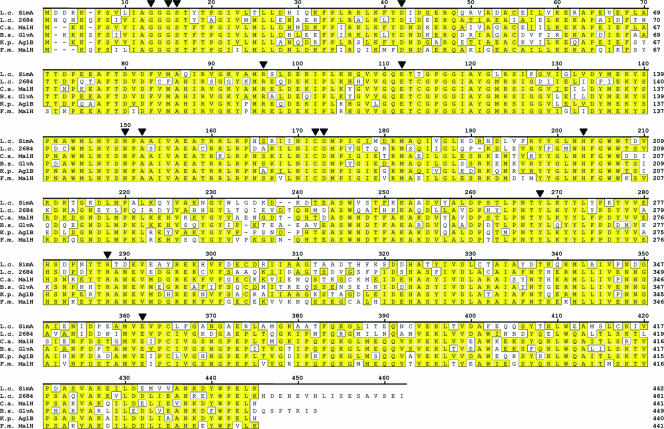FIG. 1.
Comparative sequence alignment of NAD+- and metal ion-dependent Pagls belonging to the GH4 family. Genes in L. casei ATCC 334 are numbered in accordance with the annotation in the GenBank database (accession no. NC_008526). The sequences of the following proteins are shown: putative Pagls encoded by L. casei ATCC 334 LSEI_0369 (simA) (accession no. YP_805670) (L.c. SimA) and LSEI_2684 (YP_807845) (L.c. 2684) and enzymes purified from C. acetobutylicum (Swiss-Prot accession no. Q97LM4) (C.a. MalH), B. subtilis (accession no. P54716) (B.s. GlvA), K. pneumoniae (accession no. Q9AGA7) (K.p. AglB), and F. mortiferum (accession no. O06901) (F.m. MalH). The numbers on the right indicate the numbers of amino acids per protein, and conserved amino acids are highlighted. The filled triangles indicate (L. casei simA numbering) residues that comprise the NAD+-binding domain of the βαβ Rossmann fold (residues 6 to 72; importantly, G12, G14, S15, and D41), proton donor residue D172, proton acceptor residue Y265, residues that coordinate with the Mn2+ ion (including A151, C171, and H202), and amino acids that participate in substrate binding (including R95, N149, and R285). Residue E111 increases the basicity of the catalytically essential residue Y265 (28).

